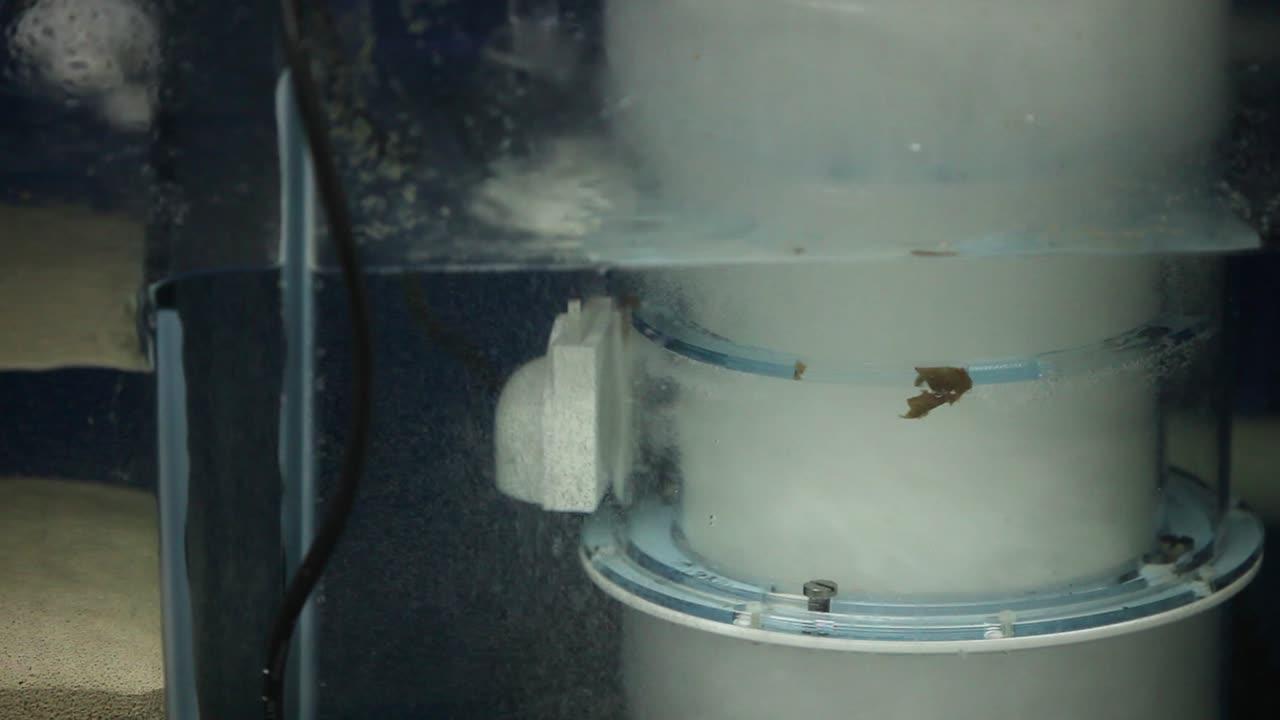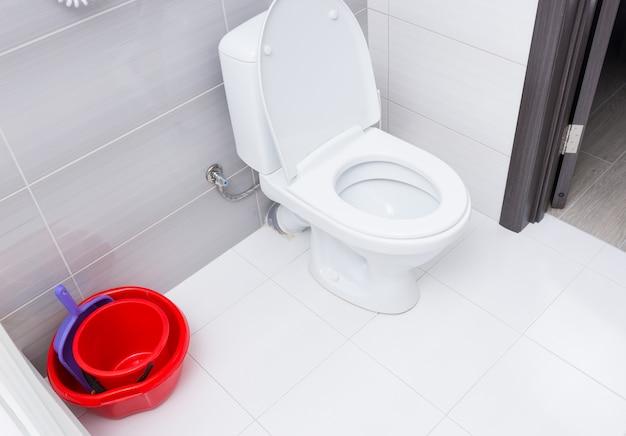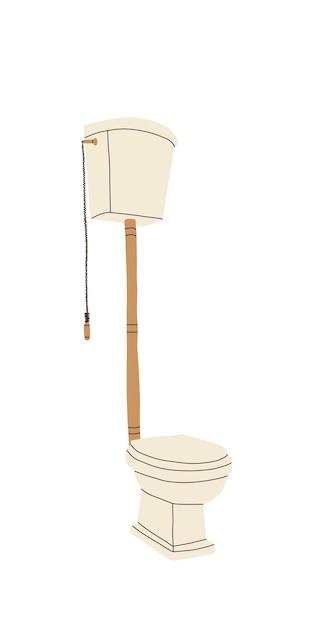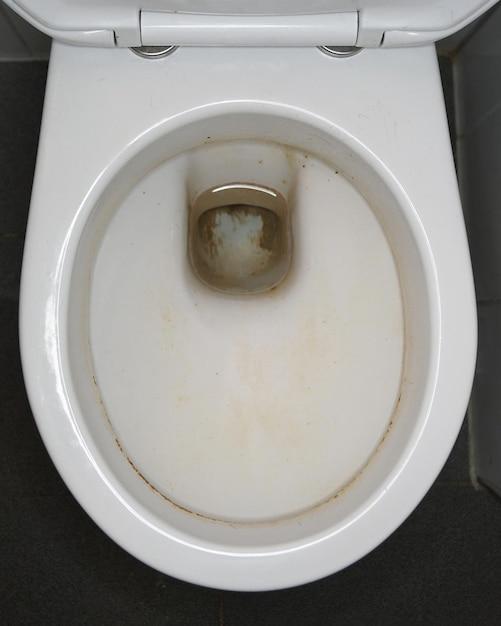If you’ve ever experienced a low water level in your toilet bowl, you know how frustrating it can be. Not only does it affect the toilet’s flushing power, but it can also make it hard to keep the bowl clean. In this blog post, we’ll explore the common reasons behind the low water level in the toilet bowl and provide you with effective solutions to fix the issue. Whether you’re dealing with no water in the toilet bowl, water draining after flushing, or wondering how much water should be in the bowl, we’ve got you covered. So let’s dive in and put an end to this inconvenient problem!
Low Water Level in Toilet
Do You Dwell in the Land of Low Water
You sit down on your porcelain throne, ready to take care of business, but wait! Something is off. The water level in your toilet is noticeably lower than usual. Panic starts to set in. Are you facing a plumbing catastrophe? Is this the end of your peaceful bathroom experience? Fear not, my friend! Let’s dive into the bizarre world of low water levels in toilets and find out what’s going on.
How Low Can You Go
So, what exactly does it mean when your toilet’s water level is as low as the barista’s apron? Well, my fellow toilet connoisseur, a low water level can indicate a couple of possible culprits. Firstly, there might be a partial clog disrupting the normal flow of water. Imagine your toilet as a traffic jam of debris, causing the water to back up and leave you high and dry. Alternatively, the problem may lie in your toilet’s tank, where the water level is not properly adjusted. Either way, it’s time to roll up your sleeves and get to the bottom of it (literally).
Taking Matters into Your Own Hands…Gloved, of Course
Before you call a professional plumber and face the potential embarrassment of explaining your low water level woes, why not try some DIY detective work? Don your detective hat, or rather, gloves, and investigate the two possible scenarios.
Scenario 1: Partial Clog
1. Grab your trusty plunger, the hero of all bathroom mishaps.
2. Place the plunger over the toilet drain and give it a few vigorous pumps.
3. If you’re lucky, the clog might dislodge and bid farewell, restoring the water level back to its former glory.
Scenario 2: Tank Adjustments
1. Remove the tank lid and take a peek inside the watery world of your toilet.
2. Look for the water level adjustment mechanism, a mysterious contraption with a float attached.
3. If your water level is too low, adjust the float to raise it up.
4. Flush the toilet and rejoice as the water level returns to its former splendor.
When Troubles Persist
If your plunger prowess and tank tinkering fail to solve the mystery, it’s time to call in the professionals. Reach out to a trusted plumber, someone who can swoop in and save the day. Remember, a low water level in your toilet is not a battle you have to face alone.
The End of the Low Water Saga
Now that you’re armed with newfound knowledge and a plunger in hand, you can conquer the land of low water levels in toilets. Whether it’s a clog or a tank adjustment, you have the power to restore the equilibrium in your bathroom kingdom. So, fear not, my fellow warriors, and flush away those worries!
How Much Water Should be in the Toilet Bowl
The Perfect Water Level: A Matter of Balance
When it comes to the water level in your toilet bowl, finding the sweet spot is like striking gold. You don’t want it too high, or you risk a dreaded overflow situation, but having it too low can be equally unpleasant. So, how much water should be in the toilet bowl? Let’s dive in and find out!
The Not-So-Scientific Water Measurement Method
Forget rulers and measuring tape – we’ve got a foolproof way to gauge if your toilet bowl’s water level is just right. It’s called the “Golden Splash” technique. Here’s what you need to do:
- Don your imaginary laboratory coat (because we are serious business here).
- Take a seat and perform your regular bathroom duties.
- As you flush, observe the water swirling around.
- If it splashes your behind or gently kisses your derriere without reaching great heights, you’re golden!
The Rule of Thumb: Get Ready for a Surprising Fact
Now, get ready to be stunned by a toilet-related reveal: the water level should cover about 1.5 to 2 inches of the porcelain surface below. Yes, you read that correctly, not the whole bowl! Too much water is not only wasteful but can also lead to unnecessary splashing during toilet-related activities. So, aim for moderation, my friend.
Balancing Act: Adjusting the Water Level
If you feel the need for water level adjustments, fear not – it’s a DIY task that even a goldfish could handle (well, maybe not, but you get the point). Locate the water level adjustment screw, which is usually found on top of the fill valve. Give it a gentle twist clockwise to increase the water level, or a counter-clockwise turn to lower it. Remember, it’s all about finding that fine balance.
Water Level Wisdom: Troubleshooting Common Issues
Still wrestling with water level predicaments? Let us drop some knowledge bombs on some common issues you might encounter:
-
Low Water Level Blues: If your toilet bowl is not filling up enough, check the water supply valve. Ensure it’s fully open and allowing sufficient water flow. Also, examine the fill valve float; it could be set too low, causing the water level to shy away.
-
Excessive Water Woes: Is your toilet bowl reaching tsunami-like conditions? The culprit might be a faulty fill valve or an incorrectly adjusted fill valve float. Try adjusting the float to a lower position or consider replacing the fill valve altogether.
Enjoy the Flush-tastic Journey!
Voila! Now you’re armed with knowledge about the ideal water level in your toilet bowl. Remember, achieving the perfect balance is crucial for a harmonious bathroom experience. So, with your newfound wisdom, go forth and conquer the toilets of the world with confidence and a splash of humor!
No Water in Toilet Bowl, but Water in Tank
The Mystery of the Vanishing Water
So, picture this: you’re strolling into the bathroom, ready to take care of business. You confidently flush the toilet, only to be met with a disheartening sight – no water in the toilet bowl! But hold on a second, the tank is filled to the brim. What sorcery is this? Let’s dive into the curious case of “No Water in the Toilet Bowl, but Water in the Tank.”
The Phantom Clog Culprit
Ah, the elusive phantom clog, the mastermind behind this dastardly trick. This pesky offender is known to create havoc in the plumbing system. When you flush, the water from the tank rushes down the pipes, but instead of filling the bowl, it gets caught in the trapway due to the clog. It’s like the water is playing hide-and-seek with you!
Plunge it to Freedom
Fear not, brave soul! There’s a simple solution to vanquish the phantom clog. Grab your trusty plunger and give it a few vigorous thrusts. The pressure created should dislodge the clog, allowing the water to flow freely. And voila! Your toilet bowl will be filled with water once again, ready for its regular flushing duties.
The Mysterious Flapper Fluke
But wait, there’s another suspect lurking in the shadows – the flapper! This small but essential component controls the water flow from the tank to the bowl. If it’s worn out or not properly aligned, the water may not be released into the bowl when you flush. It’s like the flapper took a secret vacation!
Flapper Fixing Feats
To solve the flapper fluke, you need to channel your inner handyman. Lift the lid of the tank and inspect the flapper. Is it damaged or misaligned? If so, it’s time for a replacement or some adjustment. You can find a fitting flapper at your local hardware store, and remember, YouTube tutorials are your friends in this endeavor!
The Astonishing Float Trick
Last but not least, let’s unravel the curious case of the float. This little device regulates the water level inside the tank. If it’s set too low, your toilet bowl might not receive its fair share of H2O. It’s like the float is favoring the tank over the bowl – the ultimate betrayal!
Floating to the Rescue
To save the day, adjust the float! There’s usually a screw mechanism that allows you to change the float level. Gradually increase it until you reach the optimal water level in the tank. Keep testing and tweaking until the bowl gets its rightful portion of water. Balance shall be restored!
And there you have it – the tale of “No Water in the Toilet Bowl, but Water in the Tank.” Hopefully, armed with this newfound knowledge, you’ll be able to confront any future bathroom mysteries with confidence. Until then, keep a plunger in hand, and may the water flow freely in your toilet bowl!
How to Fix a Low Water Level in Your Toilet Bowl
Check the Water Supply Valve
If you’re dealing with a low water level in your toilet bowl, the first step is to make sure that the water supply valve is fully open. It may sound silly, but sometimes these things happen! So go ahead and give it a quick check to ensure it’s not the cause of the low water level.
Adjust the Water Level Float
If the water supply valve is fully open and you’re still experiencing a low water level, the next thing you can try is adjusting the water level float. This nifty little mechanism controls the amount of water that gets released into the toilet bowl after each flush. To adjust it, simply locate the float (usually a ball or cup) and either lower or raise it depending on your needs. Experiment with different positions until you reach your desired water level. It’s like a game of “find the perfect float position”!
Clean the Rim Holes
Sometimes, pesky mineral deposits can build up in the rim holes of your toilet bowl, restricting the flow of water and causing a low water level. To fix this, grab a trusty wire coat hanger (or any other long, thin wire) and straighten it out. Then, carefully insert it into each rim hole and give it a good jiggle to break up any obstructions. You’ll be amazed at how a little jiggle jiggle can do the trick!
Check the Toilet Tank
Now, let’s take a peek inside the toilet tank. Lift off the lid and see if the water level in the tank is set too low. If it is, simply adjust the fill valve until the water reaches the recommended level. Remember, we’re going for the Goldilocks principle here: not too high, not too low, but just right.
Seek Professional Help
If none of the previous solutions have worked their magic, don’t worry, there’s always help available. It’s time to call in the experts. A professional plumber can quickly diagnose and fix any underlying issues causing the low water level in your toilet bowl. Plus, they might have a few laughs along the way with your witty remarks about the porcelain throne.
So there you have it! A few simple steps to fix the low water level in your toilet bowl. Remember, troubleshooting your toilet can be a funny and light-hearted adventure. Just try not to fall in love with your newly adjusted water level, or you might spend more time in the bathroom than necessary!
Water Drains from Toilet Bowl after Flushing
Has this ever happened to you? You flush the toilet, expecting a powerful swirl that leaves no trace behind, only to be greeted with a disappointing low-water level aftermath. It’s as if your toilet has decided to play a mischievous trick on you. Well, fear not, for you’re not alone in this battle against a lackluster water level in your toilet bowl. Let’s dive into the various possible causes and solutions for this perplexing phenomenon.
The Ghostly Siphon Effect
One possible explanation for the water mysteriously draining from your toilet bowl after each flush is the infamous siphon effect. It’s like a sneaky little ghost haunting your porcelain throne. When you flush, the water creates a vortex that triggers a siphoning action, pulling the water down into the drainage system. But, don’t worry, there’s no need to call a ghostbuster just yet, as there are ways to remedy this situation.
The Case of the Clogged Vent
Ah, the clogged vent! It’s as if your toilet is gasping for air after doing its business. A blocked vent pipe can hinder proper airflow and cause a weak flush, leading to a diminished water level. Imagine trying to run a marathon without being able to catch your breath – poor toilet! To unclog the vent, you may need to climb up on the roof (safely, of course!) and remove any debris blocking its path. Just remember to bring your superhero cape along for the adventure.
The Grim Reaper of Low Water Pressure
Sometimes, the culprit behind the low-water level is an unseen villain: low water pressure. It’s like the Grim Reaper, silently stealing the force of your flush. If you suspect low water pressure to be the cause, you can investigate by checking the water pressure valve. Adjusting the valve or calling in a professional plumber might just save your toilet from its lackluster fate.
The Dirty Little Secret: A Clogged Pipe
Now, brace yourself for the dirtiest little secret of them all: a clogged pipe. When your toilet drain pipe is blocked, water struggles to flow freely, leading to a compromised flush. It’s like trying to swim through a pool filled with rubber duckies – definitely not an efficient way to move things along. Thankfully, there are various methods to address this issue, including using a plunger, drain snake, or even good old-fashioned plumbing tools.
Don’t Be Deceived by the Low Water Level
While a low water level in your toilet bowl can be an annoying and confusing predicament, fear not! Armed with these possible causes and solutions, you can bid adieu to your toilet’s mischievous games. So, the next time you encounter the chagrin of a post-flush low-water level, remember that you are the hero in this tale, armed with the knowledge to overcome even the sneakiest of toilet troubles. Flush on, my friend, and may your water level always be full and satisfying!
Why Does the Water Level in the Toilet Bowl Drop When it’s Windy
The Mysterious Case of the Windy Toilet
You might think that wind and toilets have nothing in common, but let me tell you, my friend, they can create quite a whirlwind of confusion. Have you ever wondered why the water level in your toilet bowl drops when it’s windy outside? Well, prepare to have your mind blown (just like the leaves outside).
Air Pressure, the Invisible Villain
Believe it or not, it all comes down to air pressure! When the wind picks up outside, it creates changes in air pressure. And as we all know, nature abhors an imbalance. So, when the air pressure outside drops, it can mess with the delicate balance inside your toilet bowl, causing the water level to drop suddenly.
The Mighty Ventilation System
To understand this phenomenon better, let’s take a peek at your toilet’s ventilation system. Under normal circumstances, your toilet acts like a boss, regulating the air pressure inside the plumbing system. But when the wind howls, it can interfere with this crucial process, disrupting the equilibrium between the inside and outside air pressure.
The Ninja Flapper Valve
Enter the flapper valve, the unsung hero (or villain, depending on your perspective) responsible for keeping the water in the toilet bowl. This valve opens to allow water to flow into the bowl and then quickly closes to stop the flow. However, when there’s a drop in air pressure caused by the wind, it can create suction that pulls the water out of the bowl, causing it to drop. Talk about a ninja move!
Saving the Day (Or the Toilet Water)
Now that we know why the water level in the toilet bowl drops when it’s windy, let’s explore some possible solutions. One option is to install an anti-siphon toilet fill valve. This nifty device works like a superhero cape, protecting your toilet water from being sucked away by changes in air pressure.
Embracing the Quirks
So, the next time the wind starts to blow, and you notice your toilet water level dropping, don’t panic! You now have the knowledge to understand the scientific forces at play. Instead, sit back, relax, and appreciate the wonders and quirks of the universe. Who knew your toilet could be so affected by the wind?
In conclusion, the water level in your toilet bowl dropping when it’s windy is simply a side effect of changes in air pressure. So, whether you choose to install an anti-siphon toilet fill valve or simply embrace the strange and mysterious ways of your toilet, remember to keep a sense of humor and enjoy the fascinating world of plumbing and weather. Stay windy, my friends!
Note: This content is intended for humorous and entertaining purposes only and should not be considered professional plumbing advice.



